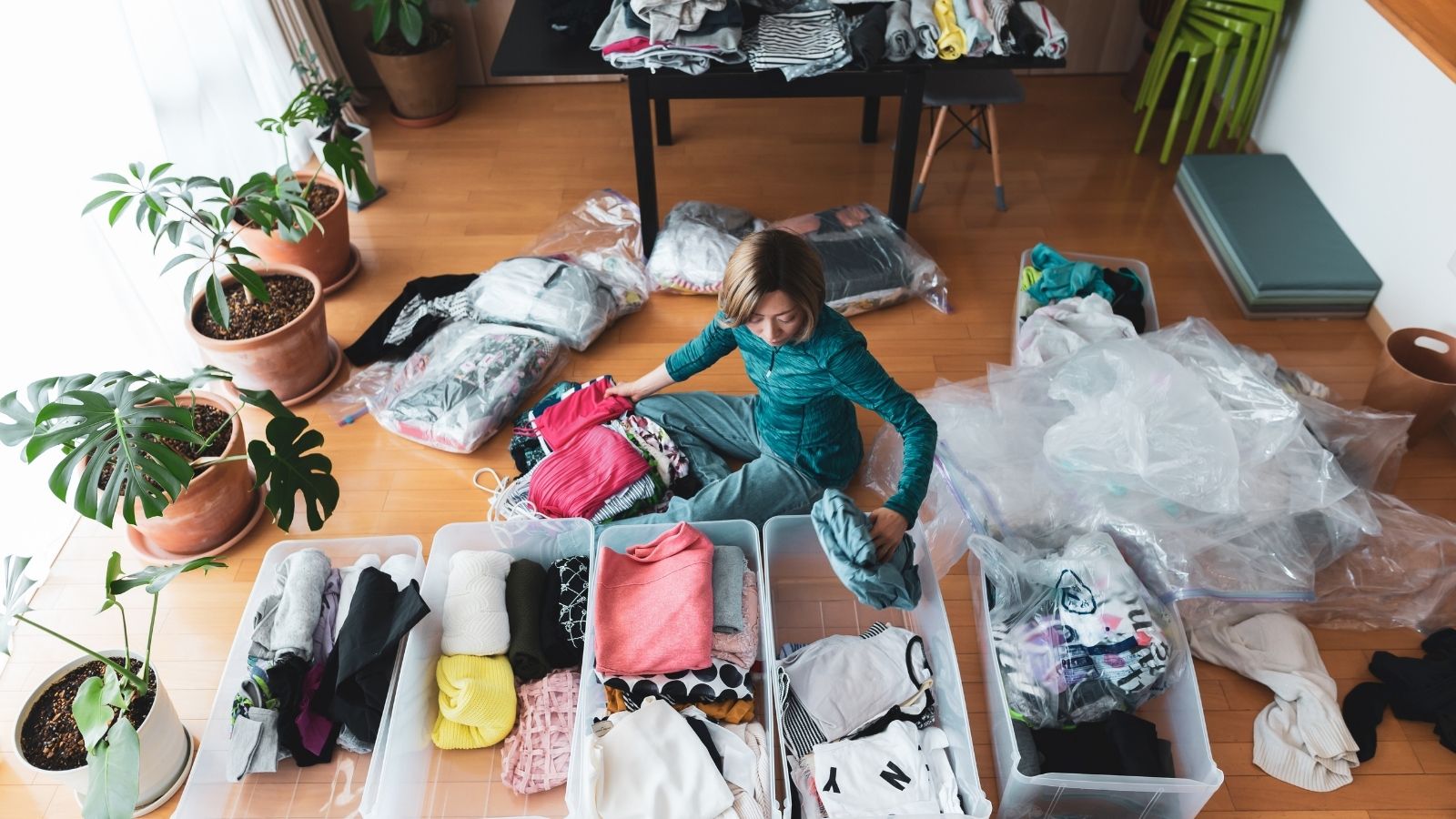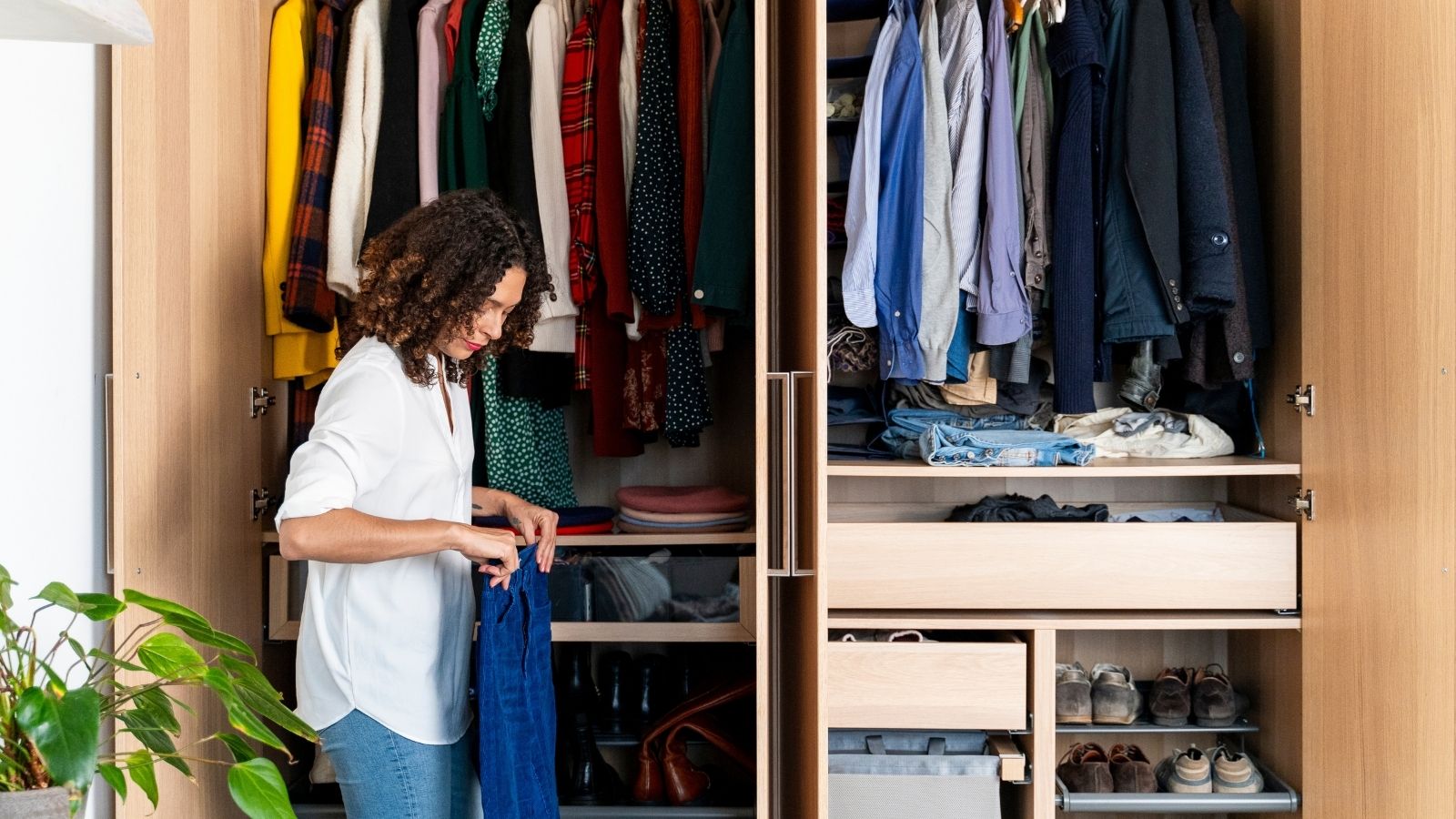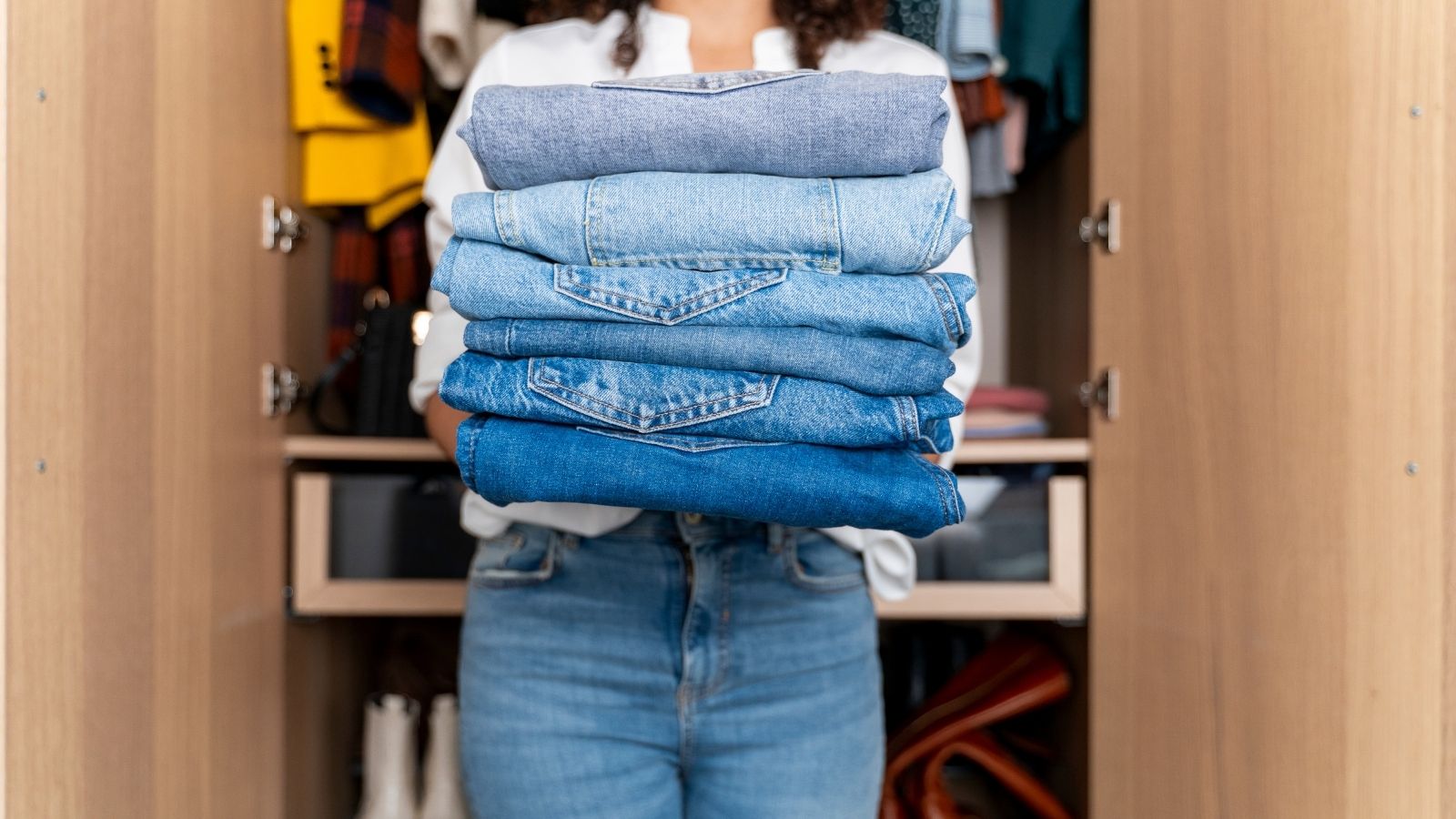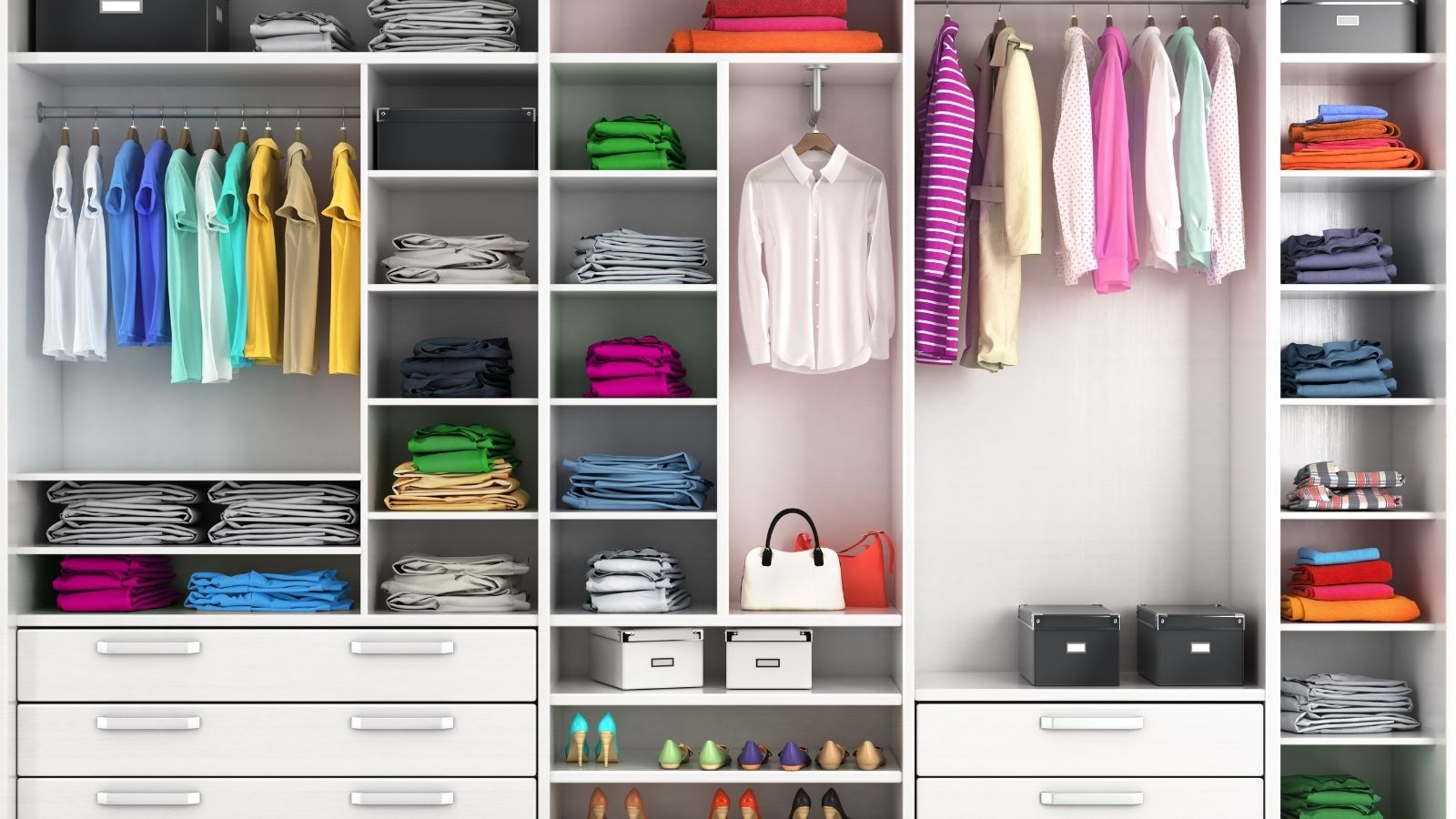How to organize your closet to help you get more out of your clothes
How to organize your closet so you can see and enjoy the clothes you have


Learning how to organize your closet is one of the greatest style skills to master. Most of us are guilty of only wearing a fraction of our wardrobe on a regular basis, having a good decluttering session will allow you to really see what you have.
If your closet is over-flowing with clothing but you're constantly left feeling like you have nothing to wear, chances are you need to learn how to organize your closet. Organizing your wardrobe properly is the first step toward creating a capsule wardrobe. It will help you assess what wardrobe essentials you have, where there are gaps that need plugging, and will hopefully allow you to rediscover some forgotten gems.
The process of organizing a wardrobe can be lengthy, so we suggest blocking out a day to really get through it all. It can be tough going but we promise at the end of it, you'll feel like your closet has had a whole new lease of life.
Here's how to organize your closet in six easy steps
Step 1: Seasonal Divide

Always organize your wardrobe at the start of the season and focus on the season you're heading into, rather than the one that's just ended. If you don't already divide your clothing by season, now is a good time to start. Pack away items from the winter months that you won't need again until at least September time. Having items you can't wear right now simply takes up space and makes it harder for you to enjoy what you should be wearing right now. If you have limited space, vacuum bags are a great way to store away chunky knits and your best winter coat.
Pile the remainder of your clothing—anything from the upcoming season—onto your bed. By doing this, you're forcing yourself to deal with it before you go to sleep.
Stylist tip...
Before packing items away, ensure they have been cleaned and are folded or hung neatly. This way they are ready as soon as you need them again.
Sign up to our free daily email for the latest royal and entertainment news, interesting opinion, expert advice on styling and beauty trends, and no-nonsense guides to the health and wellness questions you want answered.
2. Spring Clean Your Closet

Take advantage of having an empty closet. Moths love nothing more than devouring your best cashmere sweaters, so ensure you give your wardrobe a full clean and vacuum. Next, place moth repellent into the darkest corner. This can be in the form of natural repellents such as cotton wool soaked in cedarwood oil or from shop-bought mothball repellers.
Stylist tip...
Make sure you replace the repellent or scented cotton wool balls every couple of months to keep moths at bay.
3. The Try On

For this, you will need a full-length mirror. If you don't own one, make that purchase. Trust us, you need it. Next, you'll need to try on everything that is on the bed, sorting it into four piles:
- Alterations/cleaning needed—As you're trying items on, if anything needs buttons sewn on, hems redone, shortening, or a good clean, these items may not be returned to your wardrobe. Instead, they need to be kept separate and the correct action taken before they can be returned to your closet.
- Keep pile—For anything you still wear and still fits. If an item fits and you love it but you've been struggling with how to wear it, don't worry, we will get to that. But what if an item holds too many memories to go? This brings us on to our next category...
- Sentimental—This is for any items that no longer fit or are no longer relevant to your active wardrobe but do mean something to you and you don't want to part with them. Perhaps it's the dress you wore to a really important occasion, a t-shirt from a great concert. Of course, you should hold onto these items but they don't belong in your active closet. Instead, arm yourself with an airtight box, some tissue paper, and a photograph of you in the item (from the event you wore it to) and pack it away in a box, and place it somewhere out of the way.
- To go pile—This is for anything that no longer fits, you don't like anymore, or just won't wear. There is no point having items that aren't in use hanging around in your closet. They simply cloud your judgment. If you've not worn an item for at least a year, it's normally a good indicator that it's time for it to go.
Stylist tip...
Start this process early in the day, it can take some time, make sure to stay hydrated and take breaks!
4. Dividing up the 'to go' pile

There are two good options for when things go from the 'to go pile'.
- Donate to charity / give-away or recycle—Donate the clothes that are in a good condition to charity shops, organize a clothes swap with friends, take them to a local recycle center, or just give them away. But do your bit for sustainability and try to keep them out of landfills.
- Sell, sell sell—Want to earn some cash from clothes you don't want anymore? You can sell clothes online by downloading the free best apps to sell clothes - it's a great way of funding your new wardrobe.
Pack the to-go piles away accordingly and put items for alterations or cleaning to the side. If you plan on selling items think about when you're going to spend the time doing this. Remember items will need to be photographed, uploaded and details listed. Be realistic about if and when you can do this, as you don't want items sitting in a bin bag taking up space for months.
If you have any designer items that are in a good condition. Investigate resell sites. Some of these sites, for an extra fee or cut, will sell designer items for you, taking out at least a little bit of the work.
Stylist tip...
Plot your clear out when you know you'll also have time to deal with the aftermath. Make sure to ask around for a great tailor or dry cleaner as these businesses can make or break your wardrobe. At the end of each season get items clean or fixed before packing them away.
5. Outfit Building

Now you've cleared away everything you don't want in your closet, it's time for the fun bit. You should be left with items that all fit, are in a good condition and you actively want to wear.
Looking at what's left, start putting outfits together and taking photographs of them. Work out as many possibilities as you can for each item that remains. In an ideal world, you want to be able to wear everything in three different ways. Taking either mirror selfies or asking a friend to take pictures of this stage will allow you to build your own personal style book. You can print this off and hang it in your wardrobe for extra inspiration for those moments when you can't decide what to wear.
This is also a really good time to work out what is missing from your closet. Make a shopping list of what you actually need to buy to make the items already in your wardrobe work harder. And remember, any new purchases from now on should go with items that are already in existence. This stops you from ending up with pieces that look pretty but never get airtime.
Stylist tip...
Most people are good at buying statement items and not the boring basics. But your wardrobe essentials are the building blocks to your wardrobe and are incredibly important in making those more standout or trend-led pieces versatile. Make an exact shopping list of tops, jeans, or skirts that you might need to make items work harder, and stick to that list when you next shop.
6. Return items to your closet

Now it's time to organize your closet as you return everything to its freshly cleaned home. Having tried everything on and photographed outfit possibilities, you should be able to easily build an outfit each day from clearly defined sections in your closet. Hanging items by type—for example, hanging all blazers together, all skirts together, etc—should make this easier. Have a different section in your closet for occasion wear as this should not be mixed in with everyday pieces.
Make sure to hang items on the correct hanger type, this will ensure your clothes stay in a better condition. Clip hangers are ideal for skirts and trousers. Whereas jeans and knitwear should be folded. Expensive or delicate items should have covers put over them, particularly beaded items as these can snag, ruining both the item itself and whatever they attach themselves to. If you have any of the best designer bags, make sure to place these on a shelf inside their dust covers to keep them in the best condition.
If you really want to create a boutique feel in your wardrobe, treat yourself to matching hangers and make sure any dry cleaner, wire hangers are disposed of. If you have any delicate items, such as silk blouses, these should be hung on padded hangers, to both maintain their shape and avoid snagging. If you have slippy items, look for velvet hangers, or hangers with soft rubber grips to help clothes stay on. When purchasing clip hangers, make sure they don't have grooves or teeth, as these can mark items.
Stylist tip...
You may want to color coordinate items within their sections for that final touch. It does add a little extra maintenance but you'll love opening your closet up to such a high level of organization each morning.

Rivkie is a fashion editor, writer and stylist with twenty years' experience in the industry. Rivkie studied design and pattern cutting at the London College of Fashion, and fell in love with styling and journalism, and has covered fashion weeks in London, Paris and New York, as well as shooting editorial all over the world.
Specialising in plus size fashion, Rivkie has long championed that style is for everyBODY and has appeared on a host of radio stations and television shows, pushing for greater representation for plus size women and fashion throughout her career.